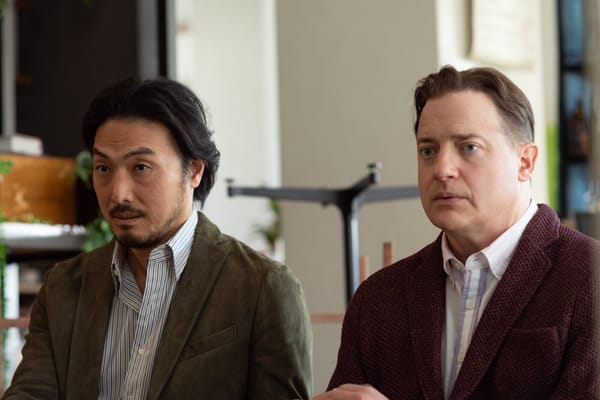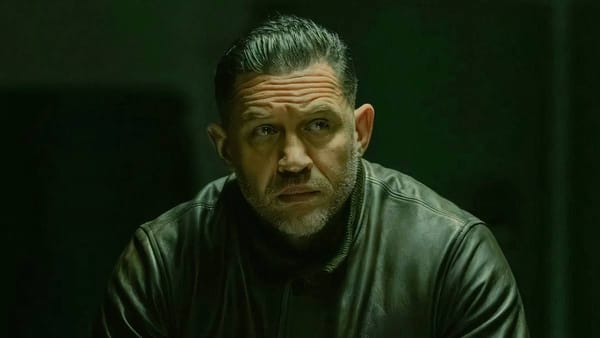In the passenger seat of grief.

There are films that invite you in, films that challenge you, and films that quietly disassemble you with the precision of a surgeon and the softness of a late-evening confession.
Ryûsuke Hamaguchi’s DRIVE MY CAR is the third kind — a masterpiece of emotional excavation disguised as a road movie, a theatre rehearsal, and a grief ritual stretched across three hours that never feel wasted.
At first glance, the film looks like a simple adaptation of Murakami’s short story. But Hamaguchi isn’t interested in transcribing Murakami’s melancholy. He’s interested in confronting it — reshaping it into a meditation on silence, performance, shame, and the things we never allow ourselves to say out loud. Murakami gives him the skeleton; Hamaguchi builds a body that breathes.
Hidetoshi Nishijima gives the kind of performance that doesn’t shout for attention. It pulls you in with restraint — like a man who has learned to speak through half-gestures because anything more might collapse him. His character, Yūsuke Kafuku, is a theatre actor and director carrying a grief so internalized it’s practically fossilized. He doesn’t break; he erodes.
The Saab is where he finally allows himself to be human. And that’s the heart of Hamaguchi’s film: a moving, humming confession booth on four wheels.
Then there’s Misaki Watari — played by Tōko Miura with a blunt, withholding honesty that slices straight through him. She isn’t written as a “cure” or a metaphor. She’s a survivor with her own abyss to navigate, and the film respects her autonomy enough to let her stand beside Kafuku without being reduced to his emotional project.
Their relationship is one of the finest portrayals of non-romantic intimacy in contemporary cinema. Two wounded people, side-by-side, not saving each other — but seeing each other.
The multilingual production of Uncle Vanya — Korean, Japanese, Mandarin, Tagalog, Korean Sign Language — is one of the most quietly radical creative choices of the film. It forces the characters to listen, to wait, to sit in discomfort until meaning reveals itself without the comfort of shared language. It’s almost a dare.
And it becomes clear that Hamaguchi uses theatre the way other filmmakers use mirrors. Every line rehearsed is a confession deferred. Every silence is a truth no one is ready to voice.
By the time we see Sonia Yuan’s performance in KSL, the emotional dam is cracked wide open. Her silence speaks louder than any monologue in the film — a reminder that grief is communal, not comparative.
Hamaguchi’s direction is ridiculously confident in its slowness. Not a self-indulgent slowness, but a therapeutic one. Scenes stretch not because he can, but because he must. He understands that grief doesn’t arrive in clean beats. It pools. It lingers. It fills the frame like fog.
The cinematography matches this tempo — long, steady takes that feel like a hand on your shoulder. A recurring image: the red Saab cutting through landscapes like a wound that refuses to close.
The emotional climax isn’t loud. It’s two people sitting in an abandoned house in snowy Hokkaido, finally saying the thing they’ve been circling for three hours. That sequence alone is worth the film’s entire runtime.
To call this a “grief movie” is too small. DRIVE MY CAR is about survival — the painfully slow kind. The kind where nothing dramatic changes externally, but internally everything tilts, just a few degrees, until you can finally breathe again.
It’s about learning that forgiveness is not a prize to win, but a landscape you arrive at gradually. It’s about the terrifying idea that listening — truly listening — might be the only honest form of love.
And in a world that loves to anesthetize feeling, Hamaguchi crafts a three-hour argument for sitting with it instead.
DRIVE MY CAR lingers in the rhythm of windshield wipers. It lingers in the echo of a line from Chekhov. It lingers in the weight of silence between two strangers who realize, slowly and painfully, that they are no longer strangers. It’s a film not just to watch, but to carry.
If cinema’s purpose is to help us articulate the parts of ourselves we bury, then Hamaguchi has made one of the great films of the 21st century — a quiet epic of human vulnerability, honesty, and the long, winding roads we take to find ourselves again.




